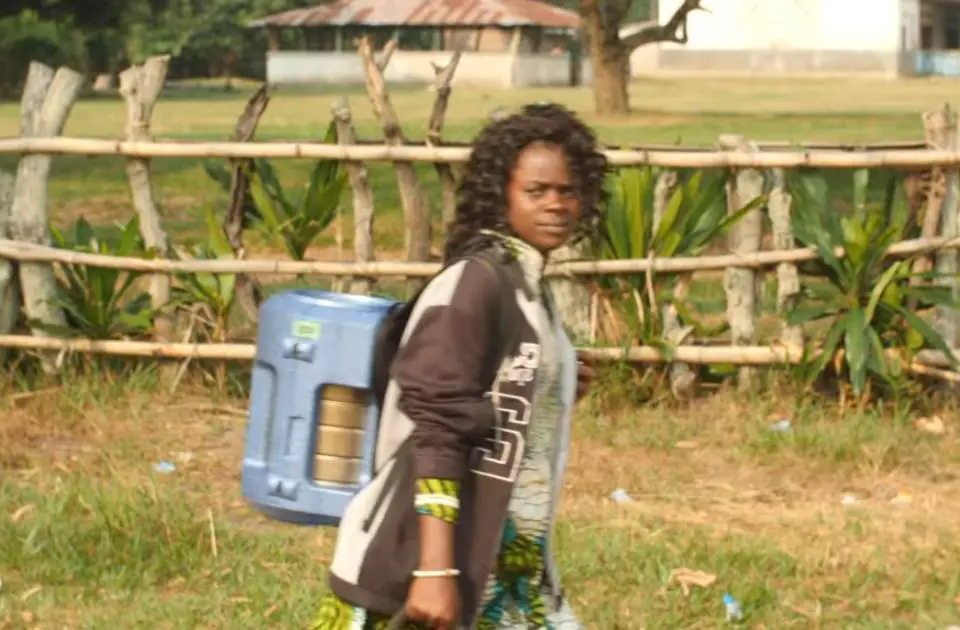Thanks to improvements in healthcare and many other areas, people today are living longer, healthier, and happier lives than ever before. And what’s more, these improvements are global. It’s happening in developing countries as well. Africa, the poorest continent (eighteen of the poorest countries by GDP per capita are in Africa) is also no exception: the Infant Mortality Rate (IMR) declined significantly between 1960 and 2001.
For example, in Ethiopia, as late as 1980, almost a quarter of the children died before their fifth birthday. Today, fewer than 6% die, which is still far too many, but the numbers continue to fall. And vaccines play a very crucial part here. But, supplying vaccines to distant clinics in hot climates served by poorly developed transport networks is a big problem. The vaccines must be kept between 2 and 8° C (36 to 46 °F). They need to be distributed in a temperature-controlled supply chain, which is called a “cold chain”. Now, there are two new innovations addressing this problem.
One of them is MetaFridge, a cooler that allows vaccines to stay between 2 and 8° C (36 to 46 °F) for days, even if the power is out.
Indigo cooler
The second one is called Indigo Cooler. In the video below, published by Bill Gates’ “Gates Notes” channel, you can see how it works and why it’s important.
Indigo cooler keeps vaccines cool without ice, electricity, or batteries, and it is light enough to wear as a backpack. When exposed to a heat source, water inside its walls evaporates and moves into a separate compartment. It can then sit on a shelf for months after heating, ready for use.
When it is finally time to head out to the children, you open a valve, and the water starts moving back where it started. Because the pressure inside the Indigo has been lowered to the point where water evaporates at 5° C, the water particles take the heat with them (the way sweating lowers your body temperature) and cool the storage area down to the perfect temperature for vaccine storage.
It seems the Indigo cooler uses the same principle as the thousands-year-old “Zeer pot” or “pot-in-pot refrigerator”. A zeer pot is a type of evaporative refrigerator. It uses a porous outer earthenware pot (lined with wet sand) containing an inner pot (which can be glazed to prevent penetration by the liquid) within which the food is placed. The evaporation of the outer liquid draws heat from the inner pot. The device can be used to cool any substance and requires only a flow of relatively dry air and a source of water.
Despite evaporative coolers very rarely manage to keep temperatures as cool as our modern refrigerators, they are a neat idea and when used in the correct environments they can provide much-needed cooling for a very little cost. The Indigo cooler is in the field trial phase, but according to Bill Gates, “the data suggest that the Indigo is allowing vaccinators to reach four times as many places as they could with the old ice-based coolers”.

Sources
- “Can this cooler save kids from dying?” on Bill Gates’s Blog
- “Busting myths about the Zeer pot” on Rebuilding Civilization
- Pot-in-pot refrigerator (Zeer pot) on Wikipedia
- Cold chain on Wikipedia
- “13 Reasons Why We Will Live Longer Than Our Parents” on Huffington Post
- “Innovative New Technologies Provide a Boost to Reaching the Last Mile” on the Friends of the Global Fight website
- Space Shuttle Endeavour’s Touchdown Meets Columbia’s Salute [An amazing photo from the past] - February 29, 2024
- Moon Landings: All-Time List [1966-2024] - February 23, 2024
- From Orbit to Ordinary: 10 Earthly Applications of Space Technology - January 23, 2024
